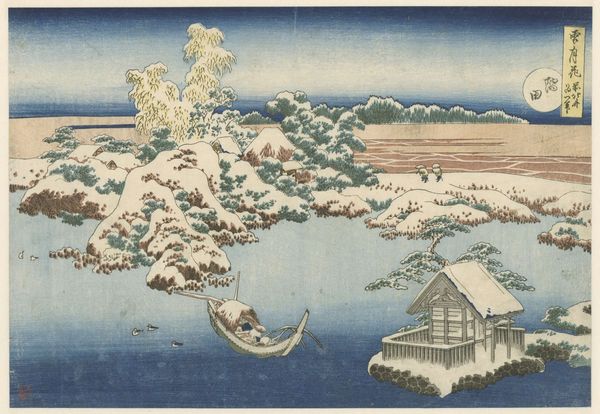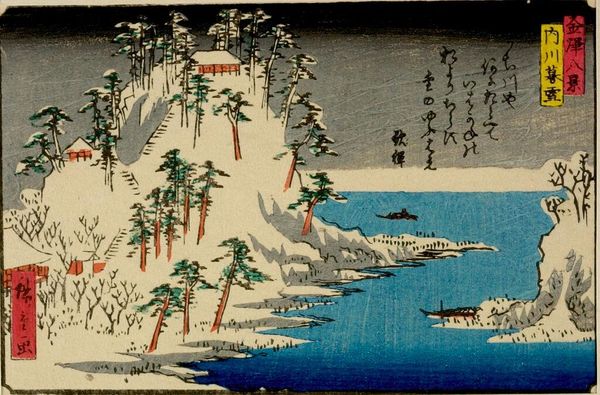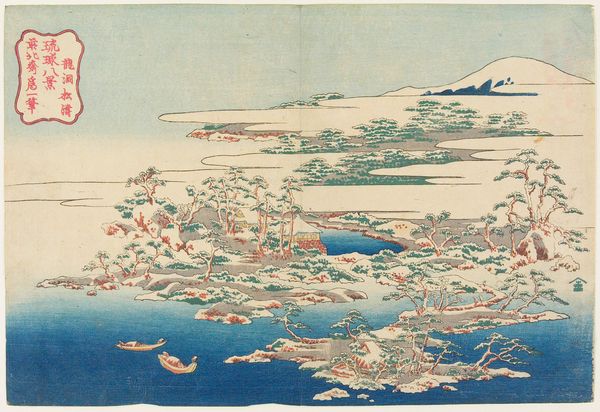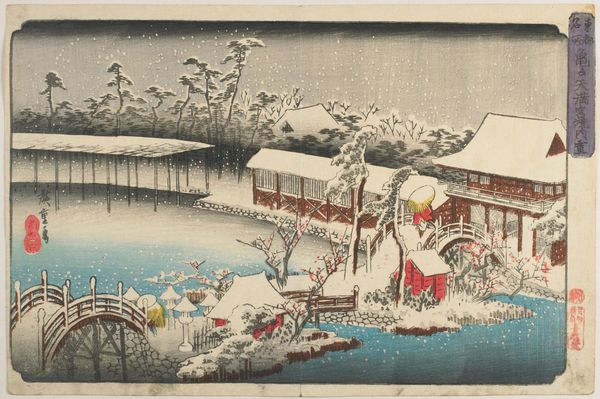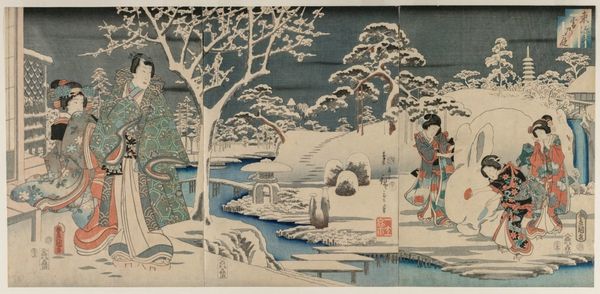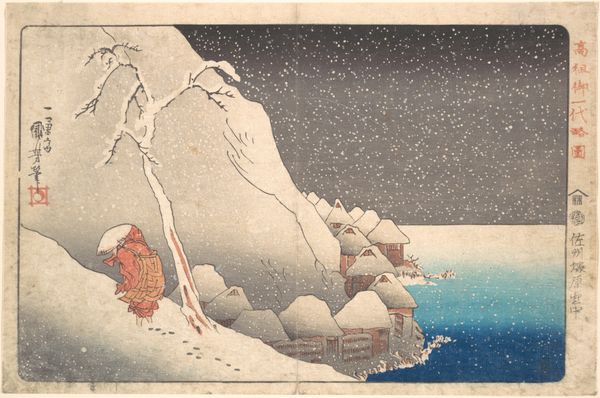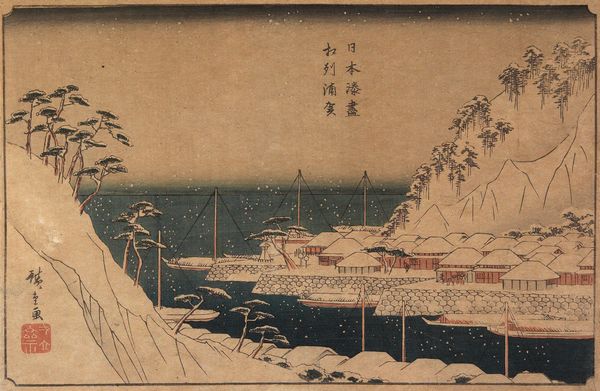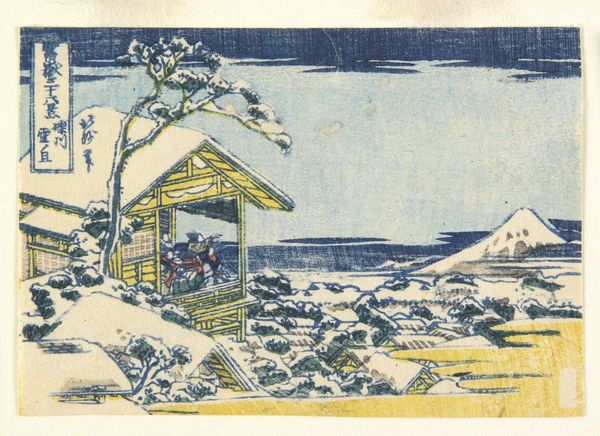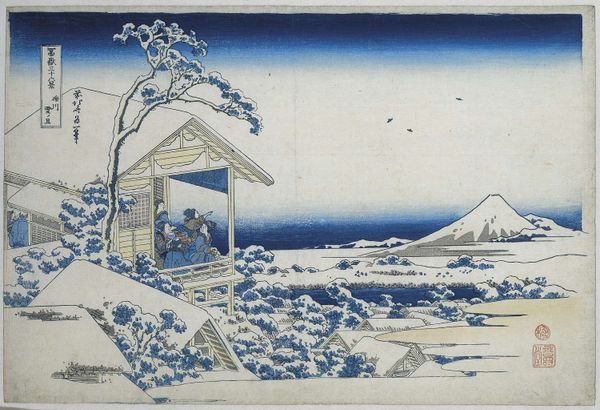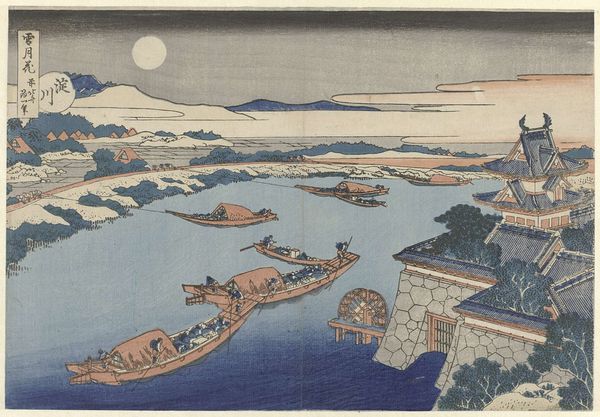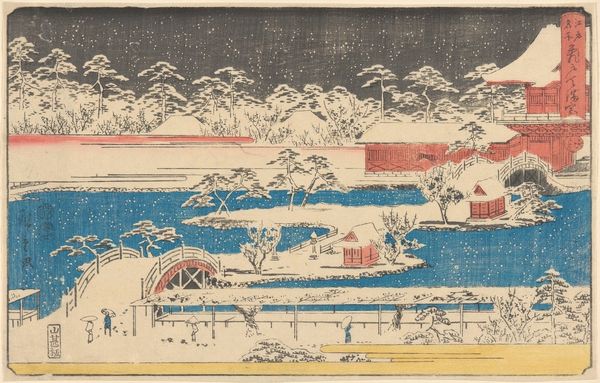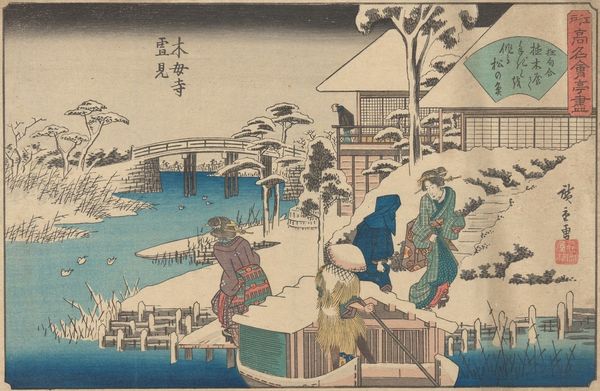
print, ink, woodblock-print
#
water colours
# print
#
asian-art
#
landscape
#
winter
#
ukiyo-e
#
ink
#
coloured pencil
#
woodblock-print
Dimensions: 9 3/4 × 14 3/4 in. (24.8 × 37.5 cm) (image, sheet, horizontal ōban)
Copyright: Public Domain
Curator: Hokusai's "Snow on the Sumida River," a woodblock print dating to about 1833 and currently held in the Minneapolis Institute of Art. Immediately, the cool blues and the expanses of white create a sense of stillness and serene coldness. Editor: Yes, it's strikingly placid. My eyes are drawn to the way the artist used blocks of color to depict different surfaces and forms. You can almost feel the bite of the winter air on the water. Curator: It is remarkable, isn't it, how the physical process directly informed the artistic choices. The texture inherent in woodblock printing, with its planes and deliberate lines, lends itself perfectly to capturing the sharp edges of the snow-laden landscape. Note also, that the flat planes are far removed from classical painterly illusion. The scene depicts a cold wintery atmosphere as observed through flattened, graphic and constructed forms. Editor: Absolutely. The bare, snow-covered trees have a poignant presence against the sky. It evokes the Zen idea of emptiness, pregnant with possibility. It speaks of resilience, and enduring peace even during the coldest periods. Curator: It's fascinating how Hokusai depicts everyday life with a spiritual underpinning. Woodblock printing like this, mass-produced, makes a particular statement as it democratized access to imagery and narrative. This method meant this image was accessible to people, which contrasts heavily to fine arts paintings which were generally only accessible to a select group of wealthy individuals. These artworks brought visual culture and understanding to the masses, becoming a cultural movement as opposed to an elitist presentation. Editor: Indeed, it gives us insights into a world accessible beyond the imperial court. The lone boat suggests an element of isolation but also, perseverance. The humble fisherman in his small boat against the vast expanse speaks volumes of humanity's enduring spirit to live with nature's most demanding realities. It almost symbolizes a spiritual passage through difficulty. Curator: It does seem appropriate that mass print became a mirror reflecting shared experiences in Japan, with all their human, natural and social interconnections. Editor: Exactly. Looking at Hokusai's “Snow on the Sumida River” truly invites you to appreciate the intersection of cultural context and the depth that symbols offer for contemplating our history.
Comments
No comments
Be the first to comment and join the conversation on the ultimate creative platform.
